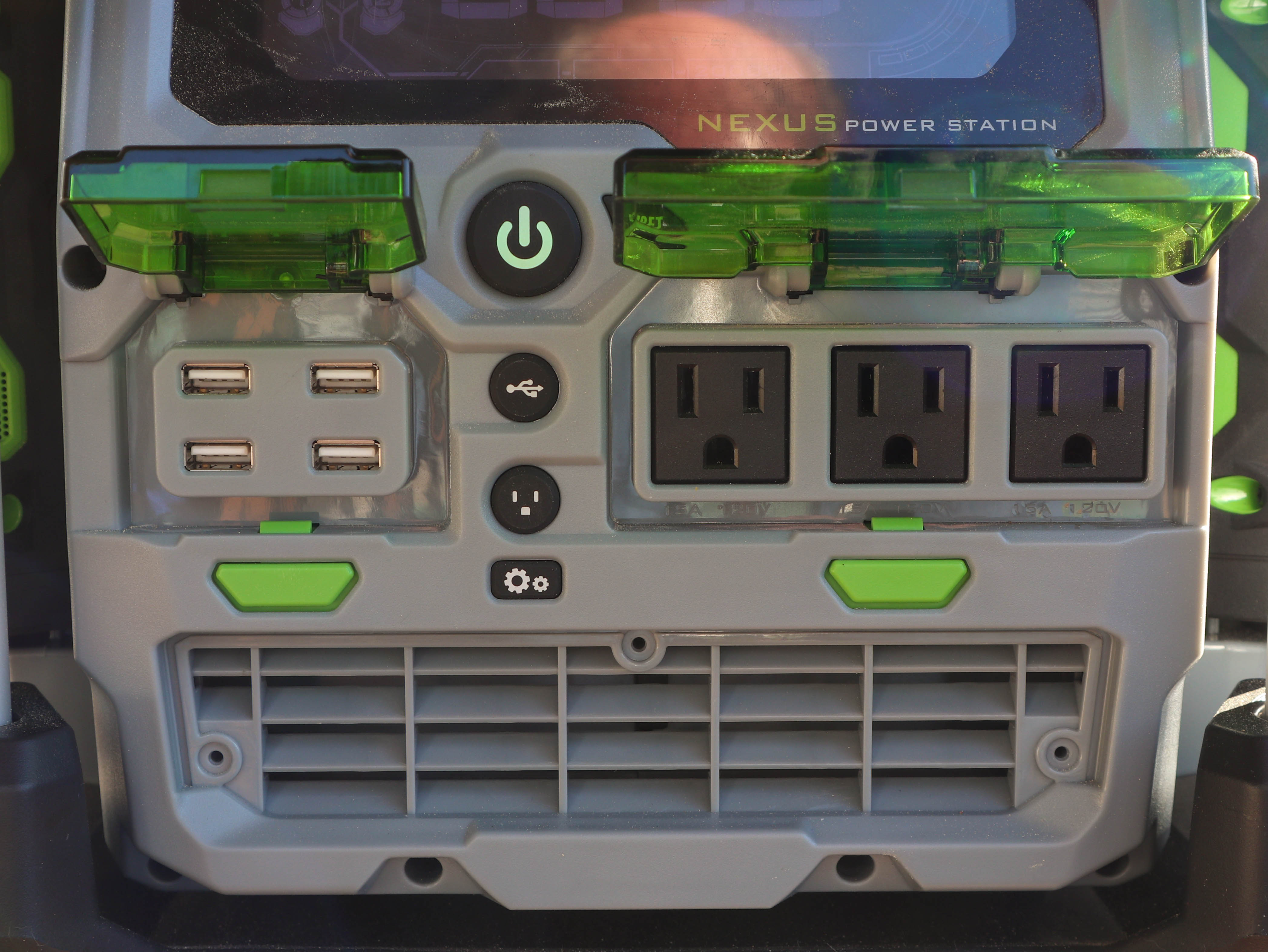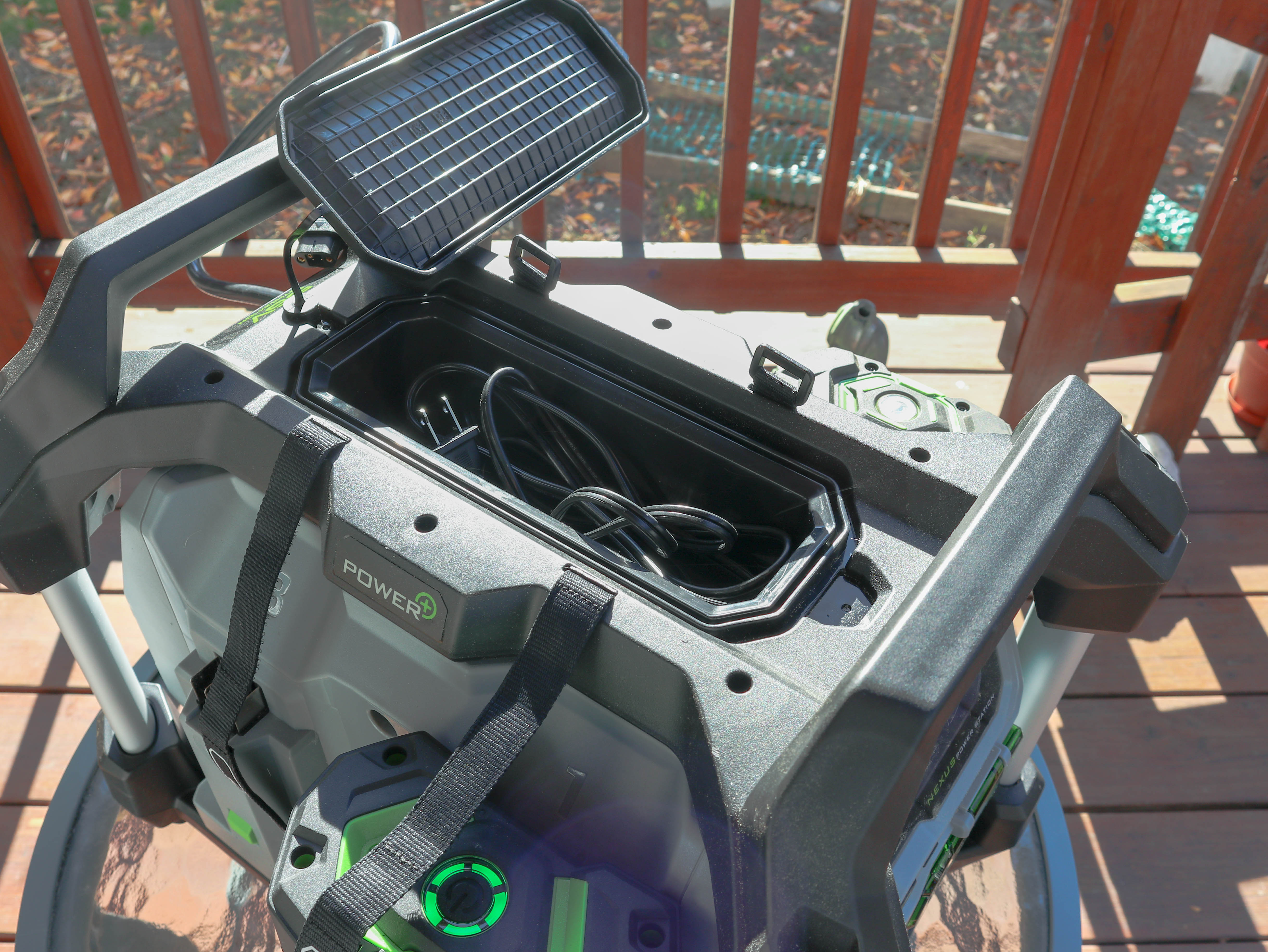Ego Power Power+ Nexus Portable Power Station Review
A portable power station that uses Ego Power tool batteries and doubles as a charger


The Ego Power Power+ Nexus Portable Power Station offers a great mix of versatility and features for the price, but is missing some of the more modern ameneties other power stations offer. It does run on the bulkier side as well, which means traveling with it can be troublesome.
-
+
Uses the same Ego Power batteries as their power and yard tools
-
+
Holds & charges up to 4 batteries
-
-
Bigger and bulkier than most
-
-
Battery capacity depends on the batteries you have, most tools come with small ones
-
-
No USB-C ports, no DC output
Why you can trust T3

A portable power station without batteries? It sounds like a contradiction, but it makes sense if you already have batteries that you use with your Ego Power outdoor tools. The Ego Power Power+ Nexus Portable Power Station (we’ll call it the Ego Nexus from now on) uses the same Ego Power+ 56V batteries that drive Egos range of trimmers, leaf blowers, lawnmowers, and many other outdoor tools.
It also doubles as a charger for up to four of these batteries: clip them onto the Ego Nexus when it is plugged in at home, and they will be kept charged and ready to go. Unplug the Ego Nexus with batteries and take it on a trip, and the batteries drive four USB and three 110V Ac ports.
It is much bigger and bulkier than dedicated portable power stations, though. However, if you use Ego power tools, it is a great way to charge them and provide an option for mobile and emergency power at the same time.
EGO POWER POWER+ NEXUS PORTABLE POWER STATION REVIEW: PRICE AND RELEASE DATE
The Ego Nexus is available now and costs $549 without batteries. We tested it with two 5.0 Ah batteries that cost $217 each, for a total cost of $983. Ego Power offers a model with four 5.0 Ah batteries for $1399. The largest battery Ego Power offers is the 12 Ah ones, which cost $599 each. So, the highest possible capacity Ego Nexus would cost just under $3000, and hold about 2688 Wh.
EGO POWER POWER+ NEXUS PORTABLE POWER STATION REVIEW: FEATURES
The Ego Nexus is a pretty large device, even without the batteries. It can hold up to four batteries, two of which clip onto either side. There are handles on the front and back, though, plus bars that protect it from bumps and drops on each side. The batteries lock firmly into place when they are attached but are also easy to remove. You can mix and match batteries, from the smallest 2.5 Ah model to the largest 12 Ah unit.
On the front of the Ego Nexus are the outputs: four USB-A ports and three standard 110V AC sockets. These can be turned on and off separately. The USB ports are the same A-type (large rectangular ones) you see on most phone chargers, and each port can deliver 5V at a maximum of 2.1 Amps. That means they can charge your phone or laptop at a maximum rate of about 12 Watts. Most other portable power stations can deliver up to 15 Watts on a type A socket, and many now offer USB-C ports that can deliver up to 100 Watts. So, your fancy iPhone or Android phone will charge from the Ego Nexus, but it will take some time.
These ports are covered by a clear plastic panel that pops out of the way when you press a button to release it. It is not fully waterproof, but it is water resistant, and a couple of replacement panels that shield the sockets from the rain while still allowing you to use them are included.
Get all the latest news, reviews, deals and buying guides on gorgeous tech, home and active products from the T3 experts
The three 110V AC sockets can deliver a maximum of 2000 Watts or a surge of 3000 Watts when needed. That’s plenty to run a few lights, a coffee maker, or a small TV. That does require at least two batteries, though: if you use just one or the smaller 2.5Ah ones that come with most Ego Power tools, you will only get 600 or 1200 Watts. Ego power has a nice interactive module on their web site that shows what the various battery combinations should be able to handle.
Above the sockets, a clear display shows each battery's charge level and the estimated time the charge will last. Ego Power also offers an app that can connect to the Power Nexus over Bluetooth so you can monitor it from a distance.
A cover on the top of the body of the Ego Power pops off and provides a place to stash cables and connectors. This cover comes with a couple of velcro strips that are used to hold the large 170 Watt power adapter in place, which is useful because it uses a proprietary connector to connect to the Ego Power, so if you lose it, you’ll have to buy a new one from Ego Power.
This device does not support pass through power: if you are running a device from the AC outlet and then plug the power supply for the Ego Nexys in, the AC outputs stop working. That means you can’t use it as a UPS (Uninterruptible Power Supply) to run devices in case of a power outage: you will need to physically move the cable from the wall socket to the AC output of the Nexus.
The whole thing feels pretty robust, with bars on the edges that make it easier to pick up and protect it from knocks. The batteries stick out of the sides, especially the larger, higher-capacity ones, so you need to handle them with some care to protect them from getting damaged.




EGO POWER POWER+ NEXUS PORTABLE POWER STATION REVIEW: SETUP & USE
The Ego Nexus is very simple: you just turn it on with the large middle button, then enable the output you want with a button on the front, press the button to pop the cover and plug in. The large, bright screen shows you how much power the device is drawing and estimates how long the charge will last. The charge level of each of the four batteries is also shown, but the actual power output level is not: instead, a gauge on the right of the screen estimates how much of the maximum output is in use. The accompanying app provides more detailed information, including the power used.
The Ego Nexus with the two 5.0 Ah batteries took about 5 hours to charge with the included charger. It can’t be charged with solar power out of the box. To charge it from solar, you’ll need an additional $160 adapter that converts the power from the panels into a more palatable format. This adapter can handle a maximum of 180 Watts, so you could use a couple of medium-sized solar panels to charge it.
EGO POWER POWER+ NEXUS PORTABLE POWER STATION REVIEW: PERFORMANCE
The amount of juice that the Ego Nexus can store depends on the type of batteries that you install. Options are available from 2.5 Ah to a large 12 Ah. Stick four of those on this, and you’ve got an impressive 48 Ah or about 2688 Watt Hours. That’s double the capacity of most of the larger portable power stations we have tested, but it comes at a price: the Ego Nexus and four monster 12 Ah batteries will cost you about $3k and weigh 28 Kg/62.33 lbs. That’s a lot to lug on a camping trip.
A more reasonable combination is the one with four 5 Ah batteries which Ego sells as a package for $1399. That offers about 1120 Watt-hours, which is about two-thirds of that offered by the BioLite BaseCharge 1500, which costs about $200 more.
EGO POWER POWER+ NEXUS PORTABLE POWER STATION Review: Verdict
The Ego Power Power+ Nexus Portable Power Station offers one big hook: you can use the same batteries to run Ego Power tools and power your camping trip. So, it makes a lot of sense if you are already an Ego Power user: you can save money by using the batteries you already have.
However, this requires some checking first, as most Ego Power tools (like the ST1521S string trimmer I reviewed) come with the smallest 2.5 Ah batteries, which don’t last that long. If you buy the Ego Nexus without batteries and use the single 2.5 Ah battery included with that trimmer, you can only run a light for a few hours or charge your laptop two or three times.
If you want more power storage, you’ll need to buy more batteries, which adds to the weight and bulk of an already large and heavy device. So, the price you pay for the double-duty job of offering portable power and charging batteries for your garden tools is that it is bigger, heavier, and less convenient.
Is that worth it? It might be if you already use Ego Power tools in your yard. But if you don’t, you would be better off looking at a dedicated portable power station that offers more bang for the buck.

Richard Baguley has been writing about technology since the 1990s, when he left a promising career in high finance to work on Amiga Format magazine for Future. It has been downhill for him ever since, writing for publications such as PC World, Wired and Reviewed.com. He has tested gadgets as diverse as 3D printers to washing machines. For T3, he covers laptops, smartphones, and many other topics. He lives near Boston in the USA with his wife, one dog, and an indeterminate number of cats.